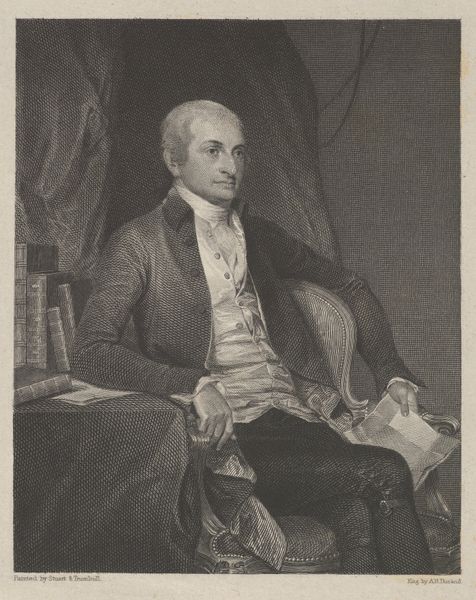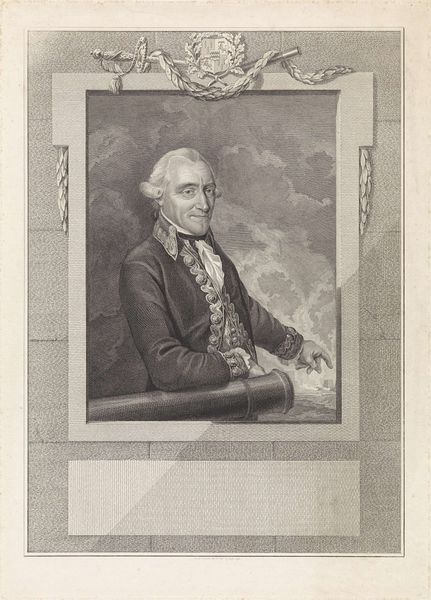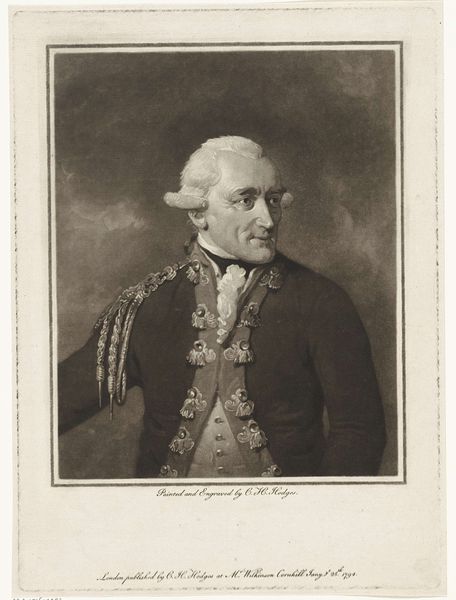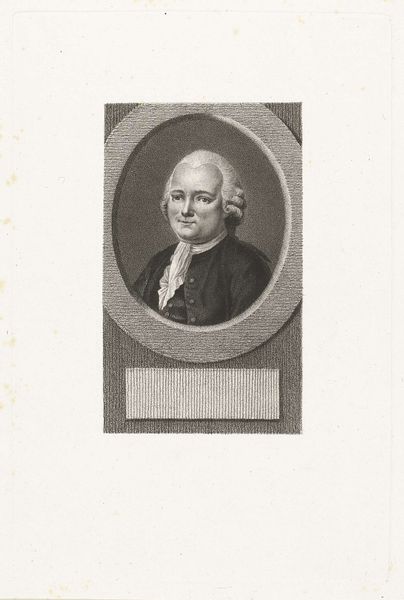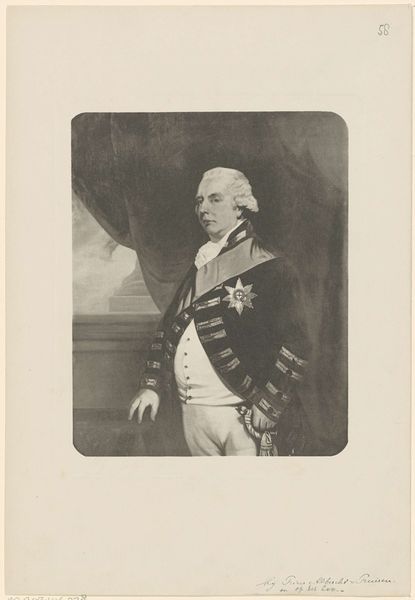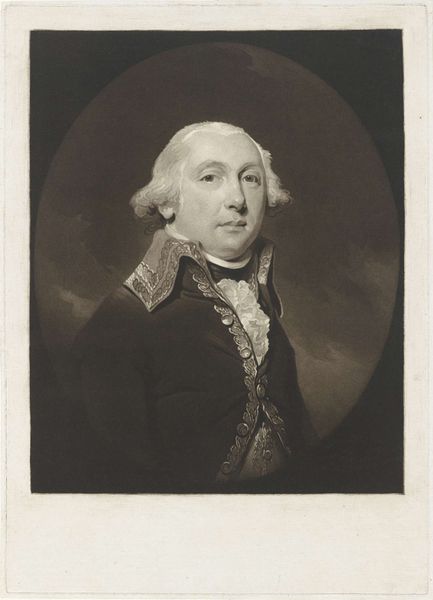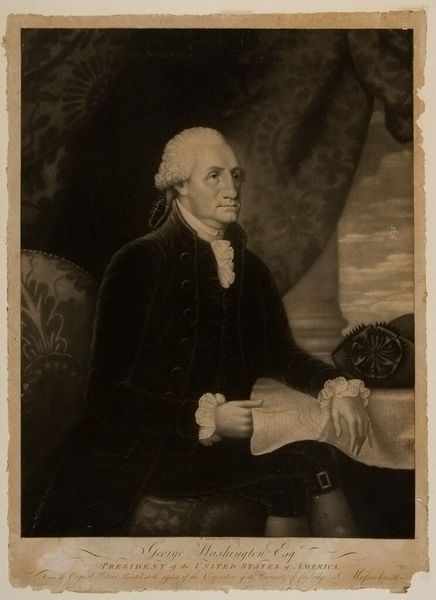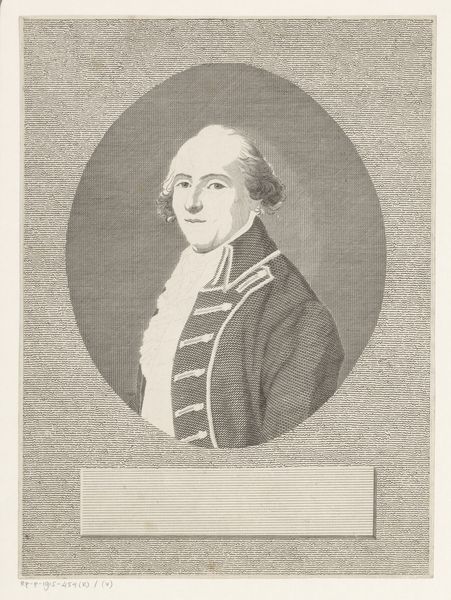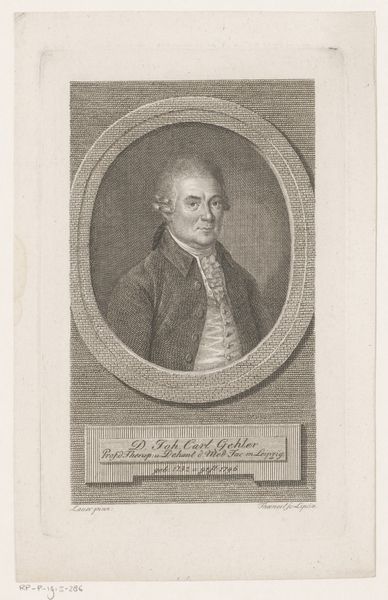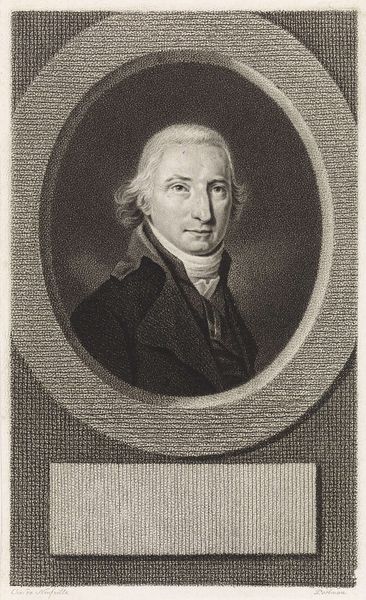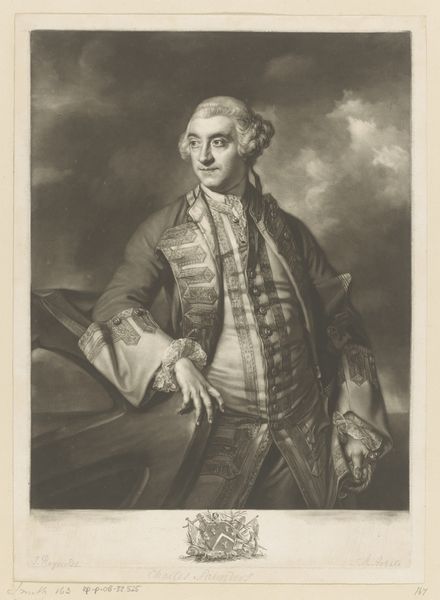
engraving
#
portrait
#
neoclacissism
#
19th century
#
history-painting
#
engraving
Dimensions: height 508 mm, width 355 mm
Copyright: Rijks Museum: Open Domain
Curator: Welcome. Here we have "Portret van John Carr," made sometime between 1774 and 1837. It’s an engraving now held here at the Rijksmuseum and realized by Charles Howard Hodges. Editor: There's something very measured about it. The textures feel so controlled, almost as if it aspires to the precision of a technical drawing itself. The monochromatic palette contributes to the mood, everything rendered in a careful balance of light and shadow. Curator: Indeed. John Carr was a prominent architect during the late 18th and early 19th centuries in England. Notice how Hodges portrays Carr not as some distant, aristocratic figure, but as an active professional—pen in hand, blueprints displayed. It projects the burgeoning status of architects within British society at that time. Editor: It is striking how the folds of fabric, the architectural plans, and even the wig, are so deliberately rendered with crisp lines, each object delineating form and structure in a unified style. The composition guides my eye meticulously. It creates an intriguing dialogue between Carr as an individual and the architecture with which he's intimately related. Curator: Absolutely. He isn’t merely an individual but emblematic of Enlightenment values that elevated reason and design. Presenting Carr with architectural plans also underscores the social importance attributed to planned environments and designed buildings. Consider, this portrait serves a political function. It embodies this newfound faith in design shaping British society. Editor: Considering Hodges' tonal variations, there's something inherently dramatic about the composition, even constrained within its monochromatic scale. His ability to create volume is commendable, casting the forms from an ambiguous background into striking presence. Curator: Which shows Hodges' prowess and how engravings served more than documentary functions; these reproduced portraits reinforced political status and societal values. It's a great lens for viewing not only a person but the ethos of that era. Editor: Quite insightful. It is fascinating to see how this singular devotion to formal integrity could reveal so much cultural intention and historical insight.
Comments
No comments
Be the first to comment and join the conversation on the ultimate creative platform.
